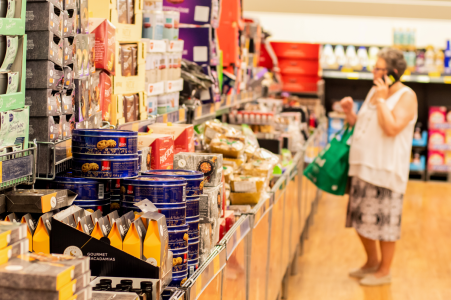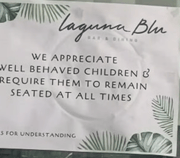Discover this Aussie's ingenious trick to slash your weekly grocery bill by $50!
Prices across the board are going up, and this worrying trend doesn't seem to be stopping anytime soon.
So, when we came across a thrifty tip from Melbourne-native Lulu Breen, who discovered a way to save a whopping $50 a week on groceries, we simply couldn't resist sharing it with all of you.
Lulu started noticing her grocery bill creeping higher and higher, particularly for items like chips, toilet paper, washing detergent and more. Frustrated, she decided to think outside the box and found innovative ways to still enjoy shopping without breaking the bank.
'Lots of individual items…have gone up by $2 in the past couple of years. Food and home supplies…have increased a lot,' Lulu said.
Her solution? She stopped relying solely on traditional supermarkets as her source of groceries and decided to scout for better deals elsewhere.
And just like that, Lulu set off to the Queen Victoria Market in Melbourne. Here, she would opt for discounted fresh local fruits and vegetables instead of the full-priced products at mainstream markets.
She also shops at Cheaper Buy Miles, an outlet that sells foods nearing or past their 'best before' dates at hugely discounted prices.
For example, Lulu shared that oat milk—something that is typically priced as high as $4 to $6 in regular supermarkets—can be found for between just $1 and $2 at the outlet!
Another shopper shared a video on social media while they were shopping at Cheaper Buy Miles. You can watch it here:
A nugget of wisdom here for those worrying about using items past their 'best before' date: it’s important to differentiate between the ‘best before’ date and ‘use by’ date.
While the ‘use by’ date is an indication that food must be eaten or discarded by that date for safety reasons, ‘best before’ is more about quality.
The New South Wales Food Authority stated that these may have seen some deterioration in quality but can still be safely eaten as long as they are not damaged or perished.
Along with this shopping tip, Lulu said she incorporates meal prepping into her routine, resulting in an estimated savings of at least $50 per week–just imagine the annual savings with that!
At this point, some of our members might be wondering, 'What about us? We don’t have a Cheaper Buy Miles here!'.
Not to worry! Outlets like Beyond Best Before in Sydney offer a similar concept.
Sadly, research conducted by ING shows that the average Australian household now spends a staggering $162 per week on groceries.
The increase in food prices has led 44 per cent of people to shop only when products are on sale, 37 per cent have started opting for ‘home brand’ products, and 32 per cent have switched to cheaper supermarkets.
It does seem like compromises need to be made, but there are still areas where Aussies prefer to splurge a little. These luxuries include meat and fish (30 per cent), tea and coffee (29 per cent), fruits and veggies (25 per cent), bread (19 per cent), and pet food (16 per cent).
Despite using discount hacks, Lulu enjoys treating herself now and then with a $7 packet of chips or some fresh hummus dip from the market. 'I think it’s important to still enjoy what you eat despite the cost of living,' she shared.

What do you think of this story, members? Do you have other tips on how to save on grocery bills? Share them in the comments below!
So, when we came across a thrifty tip from Melbourne-native Lulu Breen, who discovered a way to save a whopping $50 a week on groceries, we simply couldn't resist sharing it with all of you.
Lulu started noticing her grocery bill creeping higher and higher, particularly for items like chips, toilet paper, washing detergent and more. Frustrated, she decided to think outside the box and found innovative ways to still enjoy shopping without breaking the bank.
'Lots of individual items…have gone up by $2 in the past couple of years. Food and home supplies…have increased a lot,' Lulu said.
Her solution? She stopped relying solely on traditional supermarkets as her source of groceries and decided to scout for better deals elsewhere.
And just like that, Lulu set off to the Queen Victoria Market in Melbourne. Here, she would opt for discounted fresh local fruits and vegetables instead of the full-priced products at mainstream markets.
She also shops at Cheaper Buy Miles, an outlet that sells foods nearing or past their 'best before' dates at hugely discounted prices.
For example, Lulu shared that oat milk—something that is typically priced as high as $4 to $6 in regular supermarkets—can be found for between just $1 and $2 at the outlet!
Another shopper shared a video on social media while they were shopping at Cheaper Buy Miles. You can watch it here:
A nugget of wisdom here for those worrying about using items past their 'best before' date: it’s important to differentiate between the ‘best before’ date and ‘use by’ date.
While the ‘use by’ date is an indication that food must be eaten or discarded by that date for safety reasons, ‘best before’ is more about quality.
The New South Wales Food Authority stated that these may have seen some deterioration in quality but can still be safely eaten as long as they are not damaged or perished.
Along with this shopping tip, Lulu said she incorporates meal prepping into her routine, resulting in an estimated savings of at least $50 per week–just imagine the annual savings with that!
At this point, some of our members might be wondering, 'What about us? We don’t have a Cheaper Buy Miles here!'.
Not to worry! Outlets like Beyond Best Before in Sydney offer a similar concept.
Sadly, research conducted by ING shows that the average Australian household now spends a staggering $162 per week on groceries.
The increase in food prices has led 44 per cent of people to shop only when products are on sale, 37 per cent have started opting for ‘home brand’ products, and 32 per cent have switched to cheaper supermarkets.
It does seem like compromises need to be made, but there are still areas where Aussies prefer to splurge a little. These luxuries include meat and fish (30 per cent), tea and coffee (29 per cent), fruits and veggies (25 per cent), bread (19 per cent), and pet food (16 per cent).
Despite using discount hacks, Lulu enjoys treating herself now and then with a $7 packet of chips or some fresh hummus dip from the market. 'I think it’s important to still enjoy what you eat despite the cost of living,' she shared.
Key Takeaways
- Melbourne-based Lulu Breen saves money by buying groceries at the Queen Victoria Market and a store named Cheaper Buy Miles.
- Cheaper Buy Miles and similar stores sell discounted food that is reaching or has passed its best-before date, which has helped Lulu save an estimated $50 per week on her groceries.
- ING research found that Aussie households spend an average of $162 per week on groceries. Strategies for saving include shopping in the reduced section, buying 'homebrand' products, and shopping at cheaper supermarkets.
- While looking for ways to save, Aussies continue to splurge on certain goods like meat and fish, tea and coffee, fruit and vegetables, bread, and pet food.
What do you think of this story, members? Do you have other tips on how to save on grocery bills? Share them in the comments below!








